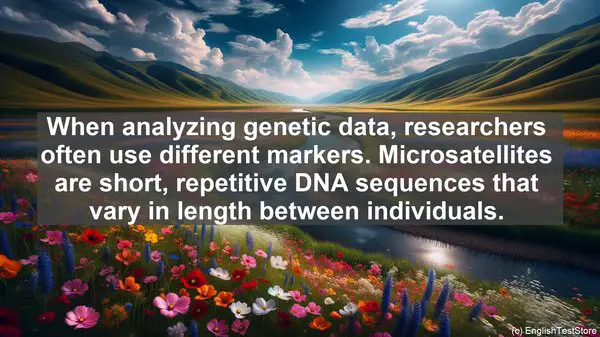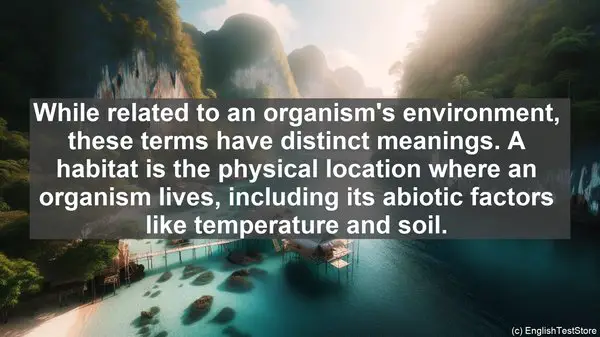Introduction
Welcome to this landscape genomics lesson. Today, we’re going to tackle a topic that often trips up even the most seasoned researchers: commonly confused words. Understanding these distinctions is crucial for clear communication in the field. So, let’s dive in!

1. Gene vs. Allele
While both terms refer to genetic information, they have distinct meanings. A gene is a specific sequence of DNA that codes for a particular trait, while an allele is a variant of a gene. Think of a gene as a recipe, and alleles as different versions of that recipe. Understanding this difference is essential when studying genetic diversity in landscapes.
2. Population vs. Community
In landscape genomics, we often study not just individual organisms, but also their interactions. A population refers to a group of individuals of the same species in a given area, while a community includes multiple populations of different species. So, while a population is like a small town, a community is more like a bustling city with diverse inhabitants.
3. Migration vs. Dispersal
Both terms involve the movement of organisms, but they differ in scale and purpose. Migration typically refers to the seasonal movement of a species from one region to another, often for breeding or feeding. Dispersal, on the other hand, is the movement of individuals away from their birthplace, usually to establish new populations. Understanding these patterns is vital for studying gene flow in landscapes.
4. Habitat vs. Niche
While related to an organism’s environment, these terms have distinct meanings. A habitat is the physical location where an organism lives, including its abiotic factors like temperature and soil. A niche, on the other hand, is the role an organism plays in its habitat, including its interactions with other species. So, a habitat is like a house, while a niche is the specific job or role an organism has within that house.

5. Phenotype vs. Genotype
When studying the genetic basis of traits, it’s essential to differentiate between phenotype and genotype. A phenotype is the observable characteristics of an organism, like its appearance or behavior. A genotype, on the other hand, refers to the genetic makeup of an organism, including the alleles it possesses. So, while a phenotype is like a book’s cover, a genotype is the story written within.
6. Homozygous vs. Heterozygous
These terms describe the presence of alleles in an organism’s genotype. Homozygous means having two identical alleles for a particular gene, while heterozygous means having two different alleles. Think of it like having a pair of matching socks (homozygous) versus a pair with different patterns (heterozygous). Understanding these terms is crucial for studying genetic diversity within populations.
7. Natural Selection vs. Genetic Drift
These are two fundamental processes that shape the genetic composition of populations over time. Natural selection refers to the process where certain traits become more or less common in a population due to their impact on survival and reproduction. Genetic drift, on the other hand, is the random change in allele frequencies over generations. So, while natural selection is like a deliberate choice, genetic drift is more like the roll of a dice.
8. Microsatellite vs. SNP
When analyzing genetic data, researchers often use different markers. Microsatellites are short, repetitive DNA sequences that vary in length between individuals. Single Nucleotide Polymorphisms (SNPs), on the other hand, are single base pair differences in the DNA sequence. Think of microsatellites as a jigsaw puzzle with varying piece sizes, while SNPs are like individual puzzle pieces. Choosing the right marker is crucial for accurate genetic analysis.
9. Isolation by Distance vs. Isolation by Environment
These terms describe different mechanisms that can lead to genetic differentiation between populations. Isolation by distance occurs when the genetic similarity between populations decreases as the geographic distance between them increases. Isolation by environment, on the other hand, happens when populations become genetically distinct due to differences in their local habitats. Understanding these processes is key to unraveling landscape genetic patterns.
10. Gene Flow vs. Genetic Drift
Both processes influence the genetic makeup of populations, but in different ways. Gene flow refers to the movement of genes between populations, which can increase genetic diversity and reduce differentiation. Genetic drift, as we discussed earlier, is the random change in allele frequencies. So, while gene flow is like a bridge connecting populations, genetic drift is like a gust of wind reshuffling a deck of cards.
